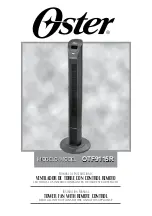
2
11
• HRV
•
VKM-GA(M)V1
• HRV
•
Heat Reclaim Ventilation
259
11.2.4 Operating Sound
As well as the required airflow and static pressure, the operating sound (noise level) is an important factor
for determining the type of ventilating fans. The noise level allowable limit may have been defined
depending on the use of the room to be ventilated. Select an appropriate type of ventilating fans according
to the noise requirements.
Operating sound unit : dB
A-weighted sound pressure level measured using a sound level meter is the measure of sound produced
by an operating ventilator fan. There has been many units used : phon(A), phon, dB(A) and dB. This
catalogue uses the internationally unified unit “dB.” Note that the sound pressure level in “phon” can be
directly converted into “dB” without changing the numerical value. Use sound level meters in the A-
weighted mode.
Allowable noise level
Building codes specify the allowable noise level for each type of room. See Table 1 for selecting.
Table 1 Allowable noise level depending on the type of room
Notes for noise level
The noise ratings shown on the nameplate of a product are those measured in an anechoic room per the
relevant JIS standard that specifies measuring procedures including the distance between the noise source
under test and the sound level meter. To select types of ventilating fans, observe the following three notes.
1. The environment affects the noise level.
The nameplate values are those measured in an anechoic room. Actual buildings have echoes from the
walls, floors and ceilings, so that the noise level depends on the building materials used and how wide
the room is. Use appropriate echo coefficients to determine the actual noise level and available fan
types.
2. Vibration
Motor driven fans, a type of rotating machine, inevitably produce vibration, though our largest efforts to
reduce such vibration have been made. To minimize vibration (propagation and resonance), the
product should be firmly mounted on the wall.
3. Synthesis of sounds
When using two or more ventilating fans in a room, consider the synthesized effect of sounds.
Other noise
•
Echoes
Depending on the type or material of the wall and ceilings of the room, and in small room, echoes occur.
•
Vibration
Vibrating objects produce vibrating sound by moving their surrounding air. 20Hz or higher frequency
sounds are audible.
•
Noise due to duct’s resistance
Higher static pressures acting on the fan will produce larger sounds.
Use of room
dB
Use of room
dB
Broadcasting studio
25
Cinema
40
Music hall
30
Hospital
35
Theater (about 500 seats)
35
Library
40
School room
40
Small office room
45
Meeting room
40
Restaurant
50
Apartment
40
Gymnasium
55
Hotel
40
Large office room
50
Residential housing (living room, etc.)
40
Factory
70
Содержание VAM-FA8VE
Страница 1: ...EEDEN07 201 technical data heat reclaim ventilation VAM FA8VE VKM GAMV1 VKM GAV1 ...
Страница 2: ......
Страница 152: ......
Страница 272: ...2 11 270 HRV VKM GA M V1 HRV Heat Reclaim Ventilation Length Flow rate ...
Страница 275: ...2 11 HRV VKM GA M V1 HRV Heat Reclaim Ventilation 273 Temperature conversion table ...
Страница 279: ...2 11 HRV VKM GA M V1 HRV Heat Reclaim Ventilation 277 R 410A Saturation pressure gauge pressure chart ...
Страница 281: ...2 11 HRV VKM GA M V1 HRV Heat Reclaim Ventilation 279 Pressure enthalpy curves of HFC32 125 50 50 wt Z0169 R 410A ...
















































